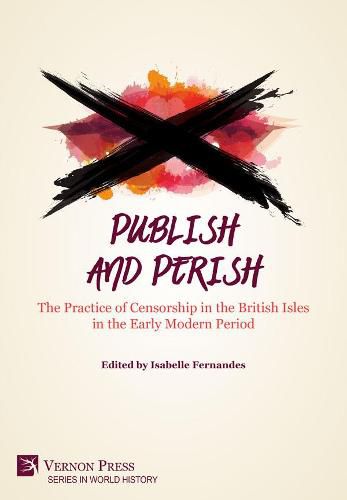Readings Newsletter
Become a Readings Member to make your shopping experience even easier.
Sign in or sign up for free!
You’re not far away from qualifying for FREE standard shipping within Australia
You’ve qualified for FREE standard shipping within Australia
The cart is loading…






This title is printed to order. This book may have been self-published. If so, we cannot guarantee the quality of the content. In the main most books will have gone through the editing process however some may not. We therefore suggest that you be aware of this before ordering this book. If in doubt check either the author or publisher’s details as we are unable to accept any returns unless they are faulty. Please contact us if you have any questions.
The development of printing practices during Tudor rule led both to the dissemination of religious and secular knowledge, and the development of a legal arsenal to control it. While the vast majority of studies on censorship regard it as being at the origin of the notion of authorship, critics tend to disagree on its actual influence on early modern writings. Who, among the Church and the secular state, were its main supporters? Did it aim at destroying or removing, punishing or protecting, hampering or regulating? Did it propagate a culture of secrecy or, on the contrary, did it help to circulate new ideas and knowledge by controlling them and making them more acceptable to the masses?
If the answers to these questions are bound to differ according to the aesthetic and religious biases of both censors and censored, they all lead to one major point of debate: did censorship really work to stop some marginal threat or did it simply improve the lot of early modern writers who turned its limited negative effects into a comforting shield of self-publicity? By suggesting it suppressed neither artistic creativity nor subversive practices, this volume analyses censorship in Britain and Ireland during the Tudor and Stuart periods as an instrument of regulation, rather than a repressive tool.
Ideal for both graduate students and general readers interested in Early Modern History, the work sheds new light on a topic as fascinating as it is often misunderstood.
$9.00 standard shipping within Australia
FREE standard shipping within Australia for orders over $100.00
Express & International shipping calculated at checkout
This title is printed to order. This book may have been self-published. If so, we cannot guarantee the quality of the content. In the main most books will have gone through the editing process however some may not. We therefore suggest that you be aware of this before ordering this book. If in doubt check either the author or publisher’s details as we are unable to accept any returns unless they are faulty. Please contact us if you have any questions.
The development of printing practices during Tudor rule led both to the dissemination of religious and secular knowledge, and the development of a legal arsenal to control it. While the vast majority of studies on censorship regard it as being at the origin of the notion of authorship, critics tend to disagree on its actual influence on early modern writings. Who, among the Church and the secular state, were its main supporters? Did it aim at destroying or removing, punishing or protecting, hampering or regulating? Did it propagate a culture of secrecy or, on the contrary, did it help to circulate new ideas and knowledge by controlling them and making them more acceptable to the masses?
If the answers to these questions are bound to differ according to the aesthetic and religious biases of both censors and censored, they all lead to one major point of debate: did censorship really work to stop some marginal threat or did it simply improve the lot of early modern writers who turned its limited negative effects into a comforting shield of self-publicity? By suggesting it suppressed neither artistic creativity nor subversive practices, this volume analyses censorship in Britain and Ireland during the Tudor and Stuart periods as an instrument of regulation, rather than a repressive tool.
Ideal for both graduate students and general readers interested in Early Modern History, the work sheds new light on a topic as fascinating as it is often misunderstood.